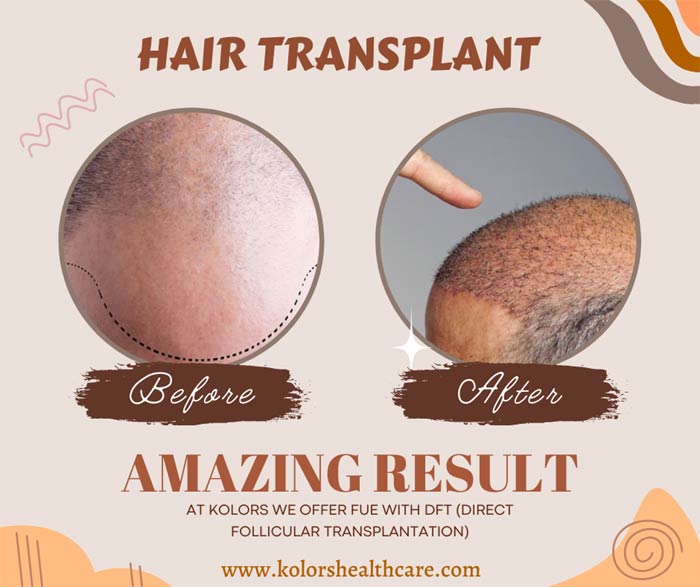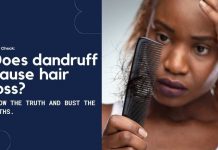There is no age limit for Hair Transplants. And studies reveal that almost 85 to 95 percent of implanted hair grafts quickly grow within the transplanted area. But bear in mind that it is standard for transplanted hair to fall out before regrowing permanent follicles. It is a part of the natural hair lifecycle and the transplant process. And then new hair starts to regrow anywhere between 90 to 100 days.
It is a fact that hair transplants are often safe and more successful than over-the-counter hair restoration products. And then, anywhere between 10 to 80 percent of the transplanted hair will fully grow back in an estimated three to four months.
Success Rates of Hair Transplant Procedures

| Hair Transplant Method | Success Rate Range |
|---|---|
| FUT (Follicular Unit Transplantation) | 90% – 98% |
| FUE (Follicular Unit Extraction) | 80% – 95% |
The success rates are approximate ranges and can vary depending on individual factors and circumstances of each case.
Factors Influencing Hair Transplant Success

However, careful placement of the grafts is critical to a successful hair transplant surgery since each patient has a unique hair growth pattern. It requires special planning to optimize the outcome of the hair transplant procedure.
And several factors must be considered by a team of professionals to implant the grafts successfully. The direction and exit angle of the hair follicle from the scalp must be adequately examined for precise alignment of the hair follicles.
Some of the other most important factors to be considered during the hair implantation process include the following:
Donor Scalp Issues
The hair follicles in the group at the donor area has higher chances of success than single or weaker hair follicular units. The success rate for patients is less with fine or sparse hairs in the donor area. The success rate also decreases if the patient is young and further hair loss is anticipated. (source)
Post-Operative Care
The surgeon invariably gives instructions during and after the operation. Several steps of post-operative care must be taken to promote the hair transplant success rate and fight against baldness. The following recommendations are essential to encourage regrowth and obtain the best results. It is necessary for the person not to engage in physical activity for several weeks after the hair transplant procedure. They should not expose themselves to the sun or wear a cap or a helmet. They should not scratch or rub the transplanted area and avoid sauna sessions.
Food Supplements to Promote Regrowth
A daily intake of vitamins and nutrients is also essential to ensure a successful hair transplant outcome. Adopting a healthy and balanced diet, food supplements, and proper meals will promote hair growth. Food supplements typically include Biotin, Saw Palmetto, multivitamins, and minerals. For a successful hair transplant, it is best to follow the instructions given by the operating team strictly.
Related Article: Hair Transplant Cost in India
Determining Success in Hair Transplants
The most crucial factor determining success in hair transplantation is whether you are a good candidate with enough donor hair to be transplanted to the thinning areas of your head. It is typically based on your specific hair loss classification. The candidate’s blood tests, physical examination, medical history, hair loss evaluation, and information about the procedure are all taken into account before the operation. These examinations are crucial for a successful hair transplant outcome.
FUE hair transplants have one of the highest success rates, and most are likely to see results between six and nine months following the operation. However, it may even take 12 months in some cases. Beware, to begin with, the transplanted hair will first fall out between two and eight weeks after the surgery.
Shampoo and lotions are given to all patients for hair wash after the operation. The lotion is meant to be applied to the recipient and donor areas by gentle tapping. Then wait for around 15-30 minutes before washing with shampoo using lukewarm water. Avoid scratching the recipient area, and be very careful while using the towel.
Factors Affecting Individual Success
Several factors affect the success of hair transplant surgery. These include general health, the hair condition of the patient, the expertise of the surgeon, and the type of technique used, as well as post-op care.
Proper Assessment is one of the primary factors affecting individual success. All patients undergo Assessment as some experience hair transplant graft rejection due to a primary scarring alopecia disease called Lichen Planopilaris (LLP).
Other factors that affect success include post-operative care, like making sure you get plenty of downtimes, avoiding strenuous activities like exercise, skipping headwear, and abstaining from nicotine and alcohol. Hair transplant patients should also avoid direct sunlight and scratching their heads during recovery. The operation’s success is usually decided after 18 months of the transplant.
Good candidates for hair transplant surgery include individuals with well-defined male baldness, females with pattern baldness, and people with hair loss from scalp injuries, scarring, or cosmetic surgery procedures.
Hair transplant surgery is unsuitable for people with permanent baldness who run in the family or with individuals with other types of bald patches of hair loss known as Alopecia Areata. Poor quality or limited quantity of donor’s hair are other discouraging factors.
Ensuring a Successful Hair Transplant
Thanks to advancements in surgery, regrowing hair on a hairless scalp is now possible. The two types of hair transplant technologies available now include Follicular Unit Extraction (FUE) and Follicular Unit Transplantation (FUT).
Both these procedures have significantly reduced the psychosocial implications of drastic hair loss.
Follicular Unit Extraction
FUE type of hair transplant procedure is performed by extracting individual hair follicles. They are then moved to another part of the scalp to fill spaces where the hair is thin or completely absent. It is the most popular of the two procedures currently in practice.
Follicular Unit Transplantation
FUT is a sutureless method of hair restoration. Hair follicles are extracted from the back of the head in this procedure under local anesthesia with the help of special micro punches. They are then implanted in the bald area of the scalp.
Choosing the Right Physician
Choosing a physician with a clear understanding of your expectations and a rigorous hair assessment for the diagnosis will go a long way in ensuring a successful hair transplant. Other things that matter include the right choice of operating technique along with careful extraction of follicles and proper placement of grafts bu the surgeon in charge.
Post-Operative Care and Product Usage
The use of recommended hair products following the hair transplant operation during the healing process is also necessary to promote regrowth and optimize results. The patient’s progress is also monitored at various stages of the post-operative follow-up.
Stress, drugs, smoking, or alcohol consumption can hinder the success of a hair transplant operation. For this reason, patients must stop such activities before and after the procedure.
Conclusion
At Kolors Healthcare Haircare Clinic, nearly 100% of patients are happy and satisfied with the hair transplant results. There are limitations like expected hair density after surgery which are limited by the number of grafts and the blood supply. We explain the limitations to our patients to present surprises.
If you have a question about hair loss, do contact us today and the team at Kolors Healthcare will assist you with the suitable treatment options. You can also call us at +91 90144 96666 for immediate assistance.









